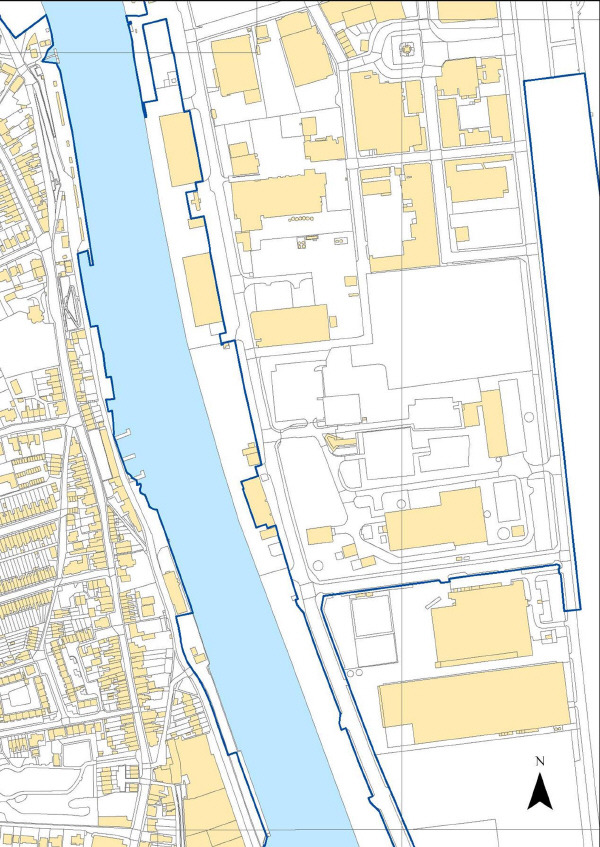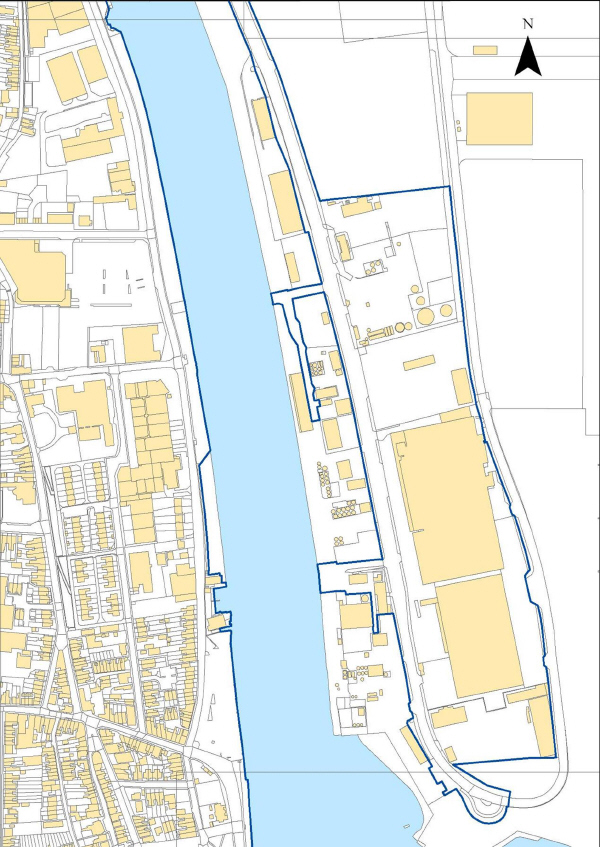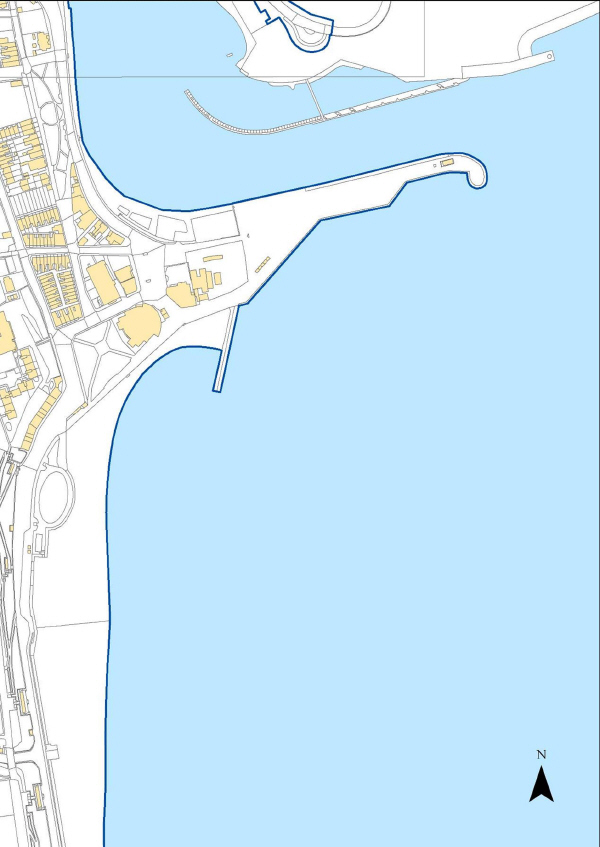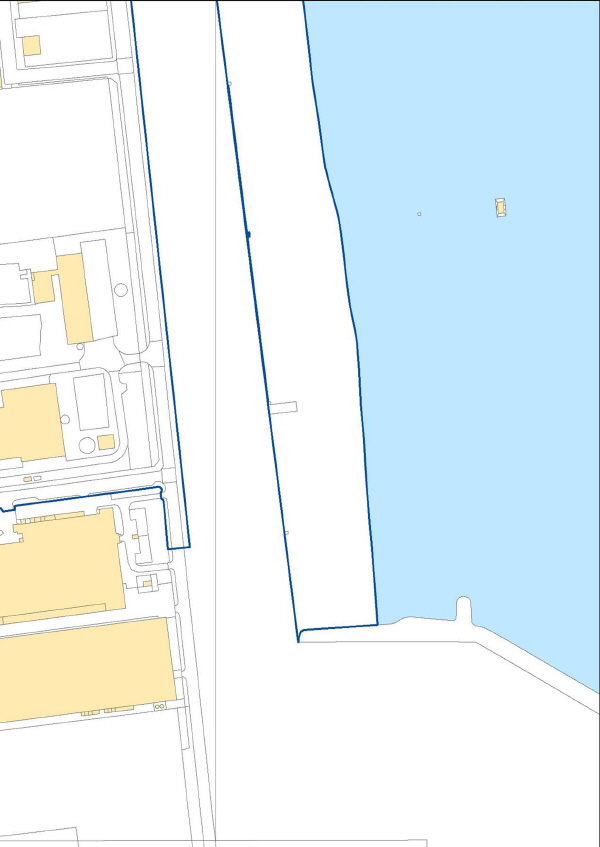- Latest available (Revised)
- Original (As made)
The Port Security (Port of Great Yarmouth) Designation Order 2013
You are here:
- UK Statutory Instruments
- 2013 No. 3078
- Whole Instrument
- Previous
- Next
- Show Geographical Extent(e.g. England, Wales, Scotland and Northern Ireland)
- Show Timeline of Changes
More Resources
Changes over time for: The Port Security (Port of Great Yarmouth) Designation Order 2013
Alternative versions:
Changes to legislation:
There are currently no known outstanding effects for the The Port Security (Port of Great Yarmouth) Designation Order 2013.![]()
Changes to Legislation
Revised legislation carried on this site may not be fully up to date. At the current time any known changes or effects made by subsequent legislation have been applied to the text of the legislation you are viewing by the editorial team. Please see ‘Frequently Asked Questions’ for details regarding the timescales for which new effects are identified and recorded on this site.
Statutory Instruments
2013 No. 3078
Merchant Shipping
Maritime Security
The Port Security (Port of Great Yarmouth) Designation Order 2013
Made
4th December 2013
Laid before Parliament
17th December 2013
Coming into force
9th January 2014
The Secretary of State for Transport makes this Order in exercise of the powers conferred by section 2(2) of the European Communities Act 1972 M1.
The Secretary of State is a Minister designated for the purposes of section 2(2) of the European Communities Act 1972 in relation to port security, measures relating to the safety of ships and the health and safety of persons on them, and maritime transport M2.
Marginal Citations
M11972 c.68; section 2(2) was amended by section 27(1)(a) of the Legislative and Regulatory Reform Act 2006 (c.51) and by Part 1 of the Schedule to the European Union (Amendment) Act 2008 (c.7).
M2S.I. 1993/595, 1994/757 and 2004/706.
Citation and commencementU.K.
1. This Order may be cited as the Port Security (Port of Great Yarmouth) Designation Order 2013 and comes into force on 9th January 2014.
Port boundaryU.K.
2.—(1) For the purposes of the definition of “port” in regulation 2 of the Port Security Regulations 2009 M3, the boundary of the Port of Great Yarmouth is defined as follows.
(2) The boundary is generally shown by the inner edge of the blue line on the plan in Part 1 of Schedule 1.
(3) The upper limit of the boundary crosses the River Yare between grid references TG 5187307808 and TG 5195907859 (being the boundary of the Broads).
(4) As to the parts of the boundary included in the rectangles marked “Inset 1”, “Inset 2”, “Inset 3”, “Inset 4”, “Inset 5”, “Inset 6” and “Inset 7” on the plan in Part 1 of Schedule 1, the boundary is more particularly shown by the blue line on each of the corresponding inset plans, in Part 2 of Schedule 1, headed respectively “Inset Plan 1”, “Inset Plan 2”, “Inset Plan 3”, “Inset Plan 4”, “Inset Plan 5”, “Inset Plan 6” and “Inset Plan 7”.
(5) Where the blue line runs along a beach or foreshore, the boundary runs along the edge of the land on that beach or foreshore which is below the level of mean high water springs.
(6) As to the seaward limit of the boundary, the points marked A, B, C and D on the plan in Part 1 of Schedule 1are located as follows—
— A is the level of mean high water springs at latitude 52�35.5'N;
— B is at latitude 52�35.5'N, longitude 01�45.5'E;
— C is at latitude 52�33.7'N, longitude 01�45.5'E; and
— D is the level of mean high water springs at latitude 52�33.7'N.
Marginal Citations
M3S.I. 2009/2048, amended by S.I. 2013/2815.
The Great Yarmouth Port Security AuthorityU.K.
3.—(1) For the purposes of the Port Security Regulations 2009 M4, the Great Yarmouth Port Security Authority is designated as the port security authority for the port of Great Yarmouth.
(2) Schedule 2 has effect with respect to the Great Yarmouth Port Security Authority.
Marginal Citations
M4S.I. 2009/2048, amended by S.I. 2013/2815.
ReviewU.K.
4.—(1) The Secretary of State must from time to time—
(a)carry out a review of this Order,
(b)set out the conclusions of the review in a report, and
(c)publish the report.
(2) In carrying out the review the Secretary of State must, so far as is reasonable, have regard to how Directive 2005/65/EC of the European Parliament and of the Council of 26th October 2005 (which is implemented by means of the Port Security Regulations 2009) is implemented in other member States.
(3) The report must in particular—
(a)set out the objectives intended to be achieved by the regulatory system established by those Regulations and this Order,
(b)assess the extent to which those objectives are achieved, and
(c)assess whether those objectives remain appropriate and, if so, the extent to which they could be achieved with a system that imposes less regulation.
(4) The first report under this article must be published before 9th January 2019.
(5) Reports under this article are afterwards to be published at intervals not exceeding five years.
Signed by authority of the Secretary of State for Transport
Stephen Hammond
Parliamentary Under Secretary of State
Department for Transport
Article 2
SCHEDULE 1U.K.
Article 2(2)
PART 1 U.K.Boundary of the Port of Great Yarmouth
Article 2(4)
PART 2 U.K.Inset Plan 1
Inset Plan 2U.K.
Inset Plan 3U.K.
Inset Plan 4U.K.
Inset Plan 5U.K.
Inset Plan 6U.K.
Inset Plan 7U.K.
Article 3(2)
SCHEDULE 2U.K.The Great Yarmouth Port Security Authority
MembersU.K.
1.—(1) The Great Yarmouth Port Security Authority (in this Schedule called “the Authority”) is to consist of three or more members, each of them appointed by the Secretary of State.
(2) Subject to the following provisions of this paragraph, each member of the Authority—
(a)holds and vacates office in accordance with the terms of the member's appointment; and
(b)on ceasing to be a member is eligible for re-appointment.
(3) A member of the Authority may resign the office of member by giving notice to that effect to the Secretary of State and will cease to hold office—
(a)on the date specified for the purpose in the notice; or
(b)if that date falls before the expiration of the period of 21 days beginning with the date on which the notice is served, on the date immediately following the expiration of that period.
(4) The Secretary of State may give notice to a member to the effect that the member will cease to hold office on a date specified for the purpose in the notice.
(5) A notice under sub-paragraph (4) may be given only in one or more of the following circumstances—
(a)the member has failed to attend four or more consecutive meetings of the Authority without the permission of the Secretary of State;
(b)the member has a financial interest and it appears to the Secretary of State that the interest is likely to influence or to be capable of being seen as influencing the performance of the member's functions;
(c)the member has been [F1made] bankrupt, the member's estate has been sequestrated or the member has made a composition with creditors or granted a trust deed for creditors;
(d)there has been misconduct on the part of the member relevant to his or her position as a member of the Authority; or
(e)the member is unable or unfit to perform the functions of the office.
(6) It is the duty of every member of the Authority, so far as is reasonably practicable, to attend all meetings of the Authority.
(7) If it be impracticable for a member to attend a meeting, the member must appoint another member to act as a proxy.
(8) A proxy must speak and vote at the meeting on behalf of the absent member as that member may direct.
Textual Amendments
Proceedings of the AuthorityU.K.
2.—(1) The Authority must hold at least two meetings in any 12-month period.
(2) Subject to the provisions of this Order, it is for the Authority to regulate its own procedure (including quorum).
(3) The Authority must appoint one of its members as chair of the Authority.
(4) The person appointed remains the chair of the Authority until that person—
(a)is replaced as chair by another member; or
(b)ceases to be a member of the Authority, in which case it becomes the duty of the Authority to appoint a new chair as soon as reasonably practicable.
(5) The validity of any proceedings of the Authority is not affected by a vacancy amongst the members or by a defect in the appointment of a member.
(6) Other than in exceptional circumstances which require a meeting of the Authority to be held at short notice, the Authority must give the Secretary of State at least three days clear notice of a meeting of the Authority together with a copy of the agenda for the meeting.
(7) A representative of the Secretary of State may attend any meeting as an observer.
(8) Minutes must be kept of the proceedings of the Authority.
(9) The Authority must provide the Secretary of State with a copy of the minutes of a meeting before the end of the period of thirty days beginning with the day of the meeting.
Members' interestsU.K.
3.—(1) A member who has any pecuniary interest, direct or indirect, in any matter that is brought up for consideration at a meeting of the Authority (which expression in this paragraph includes any committee or subcommittee of the Authority) must disclose the nature of the interest to the meeting.
(2) Where such a disclosure is made—
(a)the disclosure must be recorded in the minutes of the meeting;
(b)the member must not take any part in any deliberation or decision of the Authority with respect to that matter; and
(c)the member may be excluded from the meeting whilst the matter is under consideration.
(3) For the purposes of this paragraph, a general notification given at a meeting of the Authority by a member to the effect that the member—
(a)is a member, director or employee of, or partner in, a specified company or firm, and
(b)is to be regarded as interested in any matter involving that company or firm,
is a sufficient disclosure of the member's interest in any such matter for the purposes of any meeting where the matter comes up for discussion.
(4) A member need not attend in person at a meeting of the Authority in order to make a disclosure required to be made under this paragraph, provided that the member takes reasonable steps to secure that the disclosure is made by a notice which is read and considered at the meeting.
(5) Subject to sub-paragraph (6), a member of the Authority is to be treated for the purposes of this paragraph as having an indirect pecuniary interest in a contract, proposed contract or other matter if—
(a)the member, or a proxy of the member, is a director of a company or other body (not being a public body) with which the contract was made or is proposed to be made or which has a direct pecuniary interest in the other matter under consideration, or
(b)the member is in partnership with, or is in the employment of, a person with whom the contract was made or is proposed to be made or who has a direct pecuniary interest in the other matter under consideration,
and in the case of two persons living together as a couple (whether married or not) an interest of one, if known to the other, is deemed for the purposes of this paragraph also to be an interest of the other.
(6) A member is not to be treated as having a pecuniary interest in any contract, proposed contract or other matter by reason only—
(a)of membership of a company or other body if the member has no beneficial interest in the securities of that company or other body; or
(b)of an interest which is so remote or insignificant that it cannot reasonably be regarded as likely to influence the member in the consideration or discussion of, or voting on, any question with respect to that matter.
(7) The Secretary of State may, subject to such conditions as appear to the Secretary of State to be appropriate, remove any prohibition imposed by virtue of this paragraph in any case where the prohibition is impeding or likely to impede the ability of the Authority to perform its functions under this Order or under the Port Security Regulations 2009.
(8) The power of the Secretary of State under sub-paragraph (7) includes power to remove, either indefinitely or for any period, a prohibition which would otherwise attach to any member, or members of any description, by reason of such interests and in respect of such matters, as may be specified or described by the Secretary of State.
(9) Nothing in this paragraph precludes any member from taking part in the consideration or discussion of, or voting on, any question whether an application should be made to the Secretary of State for the exercise of the power conferred by sub-paragraph (7).
(10) Any person who fails to comply with the provisions of sub-paragraph (1) is guilty of an offence and liable on summary conviction to a fine not exceeding level 4 on the standard scale.
(11) A person shall not be convicted of an offence under sub-paragraph (10) if it is proved that that person did not know that the contract, proposed contract or other matter in which that person had a pecuniary interest was the subject of consideration at the meeting concerned.
The CrownU.K.
4. The Authority is not to be regarded as the servant or agent of the Crown or as enjoying any status, immunity or privilege of the Crown and its property is not to be regarded as property of, or held on behalf of, the Crown.
Explanatory Note
(This note is not part of the Order)
This Order is one of a series of Orders implementing Directive 2005/65/EC of the European Parliament and of the Council of 26th October 2005 (OJ L 310, 25.11.2005, p28-39) on enhancing port security at individual ports in the United Kingdom. The Directive was transposed in relation to the United Kingdom as a whole by the Port Security Regulations 2009 (S.I. 2009/2048, amended by S.I. 2013/2815).
Article 2 and Schedule 1 define the boundary of the Port of Great Yarmouth for the purposes of the definition of “port” in regulation 2 of the Port Security Regulations 2009 (as amended by S.I. 2013/2815). Article 3(1) designates the Great Yarmouth Port Security Authority, for the purposes of regulation 5 of those Regulations, as the port security authority for the Port of Great Yarmouth. Article 3(2) and Schedule 2 make provision with respect to the Authority's membership and proceedings, to members' interests and to the Authority's status as a non-Crown body. Article 4 requires the Secretary of State to review the operation and effect of this Order and publish a report before 9th January 2019 and within every five years after that. Following a review it will fall to the Secretary of State to consider whether the Order should remain as it is, or be revoked or be amended. A further instrument would be needed to revoke the Order or to amend it.
A full impact assessment of the effect that this instrument will have on the costs of business and the voluntary sector is available from Tony Smith at Zone 2/32, 33 Horseferry Road, London SW1P 4DR (Tel: 020 7944 5875; email: Tonyl.Smith@dft.gsi.gov.uk) and is published with the Explanatory Memorandum alongside the instrument on www.legislation.gov.uk.
Options/Help
Print Options
PrintThe Whole Instrument
Legislation is available in different versions:
Latest Available (revised):The latest available updated version of the legislation incorporating changes made by subsequent legislation and applied by our editorial team. Changes we have not yet applied to the text, can be found in the ‘Changes to Legislation’ area.
Original (As Enacted or Made): The original version of the legislation as it stood when it was enacted or made. No changes have been applied to the text.
See additional information alongside the content
Geographical Extent: Indicates the geographical area that this provision applies to. For further information see ‘Frequently Asked Questions’.
Show Timeline of Changes: See how this legislation has or could change over time. Turning this feature on will show extra navigation options to go to these specific points in time. Return to the latest available version by using the controls above in the What Version box.
Explanatory Memorandum
Explanatory Memorandum sets out a brief statement of the purpose of a Statutory Instrument and provides information about its policy objective and policy implications. They aim to make the Statutory Instrument accessible to readers who are not legally qualified and accompany any Statutory Instrument or Draft Statutory Instrument laid before Parliament from June 2004 onwards.
More Resources
Access essential accompanying documents and information for this legislation item from this tab. Dependent on the legislation item being viewed this may include:
- the original print PDF of the as enacted version that was used for the print copy
- lists of changes made by and/or affecting this legislation item
- confers power and blanket amendment details
- all formats of all associated documents
- correction slips
- links to related legislation and further information resources
Impact Assessments
Impact Assessments generally accompany all UK Government interventions of a regulatory nature that affect the private sector, civil society organisations and public services. They apply regardless of whether the regulation originates from a domestic or international source and can accompany primary (Acts etc) and secondary legislation (SIs). An Impact Assessment allows those with an interest in the policy area to understand:
- Why the government is proposing to intervene;
- The main options the government is considering, and which one is preferred;
- How and to what extent new policies may impact on them; and,
- The estimated costs and benefits of proposed measures.
Timeline of Changes
This timeline shows the different points in time where a change occurred. The dates will coincide with the earliest date on which the change (e.g an insertion, a repeal or a substitution) that was applied came into force. The first date in the timeline will usually be the earliest date when the provision came into force. In some cases the first date is 01/02/1991 (or for Northern Ireland legislation 01/01/2006). This date is our basedate. No versions before this date are available. For further information see the Editorial Practice Guide and Glossary under Help.
More Resources
Use this menu to access essential accompanying documents and information for this legislation item. Dependent on the legislation item being viewed this may include:
- the original print PDF of the as made version that was used for the print copy
- correction slips
Click 'View More' or select 'More Resources' tab for additional information including:
- lists of changes made by and/or affecting this legislation item
- confers power and blanket amendment details
- all formats of all associated documents
- links to related legislation and further information resources








